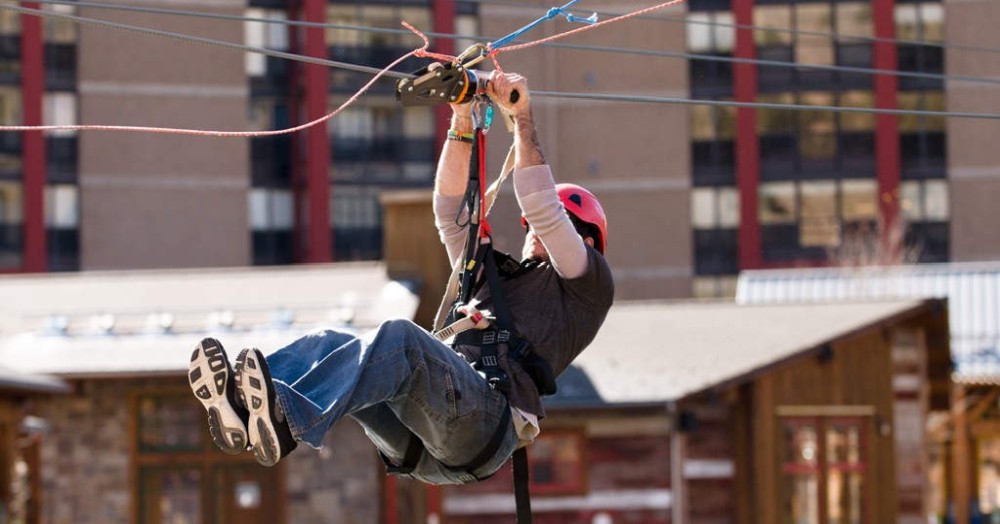
The zip line trolley is such a simple piece of equipment, but it seems to get more complicated every day. It is one of the most important parts of a zip line system, and its influence extends far beyond its primary function. The type of zip line trolley used at a site has an impact on wire replacement prices and frequency, as well as the type and performance of the brake system and maintenance expenses. It also has an impact on rider throughput time, operational strain, and, most importantly, rider experience and safety.
The list goes on—including, strangely enough, noise ordinance compliance—and all of these factors have fostered a lot of creativity in what is, at its core, a simple piece of equipment. We’ll concentrate on solo trolley operators that want to improve their current equipment without making any other significant changes to their system or operation.
So let’s have a look at what manufacturers are coming up with and evaluate some of the features to look for when deciding which trolley to buy next. Because it’s usually a big investment, be sure you have all the information you need to make an educated selection.
Choosing which trolley will best fit your existing or future operation might be difficult with so many alternatives. We spend a lot of time thinking about the equipment to use for certain procedures, and we can promise you that there is no one-size-fits-all option.
New Technologies
Trolleys with integrated connectors
The carabiner-less trolley, also known as an integrated-connector trolley, is one of the most common improvements. Manufacturers can eliminate various difficulties, such as failed carabiner gate closures and wear spots owing to the use of incompatible materials, and introduce new features, such as easy, one-hand operation for guides or operators, by removing the lanyard-to-trolley-carabiner link.
Trolleys with this type of closure are usually more expensive than those using a carabiner. However, the function is worth checking out because of its ease of use, system simplicity, and overall aesthetic.
Trolleys that are both brake and impact friendly
The cutting-edge of these trolleys, as well as how they interact with the numerous zip line brake systems available today, is where the innovation lies. Because Head Rush manufactures both trolleys and zip line brake systems, this innovation is crucial for them. All of its carts include a flat, non-metallic front edge. This ensures a smooth and non-damaging engagement with the braking system, extending the life of both the trolley and the brake system.
Other manufacturers, like as ISC, are addressing this trolley zone in a variety of ways. However, nonmetallic materials and field serviceability are recurring themes. As zip line speeds increase and brake systems become more common—and critical—this innovation will become increasingly in demand and important.
Head Rush is also addressing “the overturning moment,” as the band has dubbed it. When the trolley bangs against the brake mechanism and the zip line rider swings up, the trolley does a wheelie on its back wheel. This leads to increased wear and tear since the wheelie action and position frequently force the trolley body to brush against the cable at a high speed, adding to the system’s friction.
It’s not a major deal if this activity happens only once in a while—for example, an emergency stop. However, if this movement is repeated several times a day, the trolley body will quickly wear down, causing considerable cable damage over time.
Head Rush came up with two distinct solutions to this problem: one features a rotating attachment link, while the other has a forward-of-center connecting point for the rider. As sites seek longer-lasting, brake-friendly trolleys, more manufacturers are beginning to notice these little design features.
Trolleys that can be serviced in the field
These trolleys allow the owner/operator to replace worn-out parts with OEM parts at their leisure, eliminating the need to send the trolley in for servicing when parts are needed. This saves a lot of money, is much smarter for manufacturers, and is more ecologically friendly by minimizing waste and reusing important parts. It should be at the top of your list of must-have features for your next trolley.
-
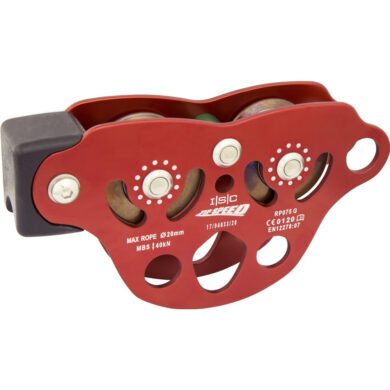 ISC Zipspeed-S Trolley€ 193,00 – € 289,00 Ex VAT
ISC Zipspeed-S Trolley€ 193,00 – € 289,00 Ex VAT -
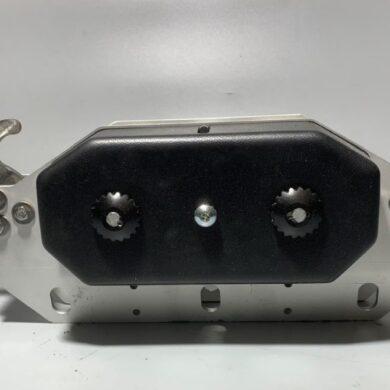 Self-braking Magnetic Zipline Trolley€ 1.320,00 Ex VAT
Self-braking Magnetic Zipline Trolley€ 1.320,00 Ex VAT -
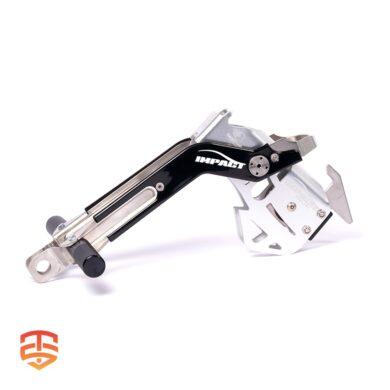 LightSpeed Impact Zip Line Trolley€ 179,00 – € 345,00 Ex VAT
LightSpeed Impact Zip Line Trolley€ 179,00 – € 345,00 Ex VAT
Magnetic brakes are built-in
Magnetic trim-brakes are being included onto zip line trolleys by ultra-premium zip line system and equipment makers. The aim of a Magnetic Self-braking Zipline Trolley on a zip line is to reduce the total top and average speeds, allowing for steeper zip line designs. This breakthrough opens up a whole new universe of possibilities for zip line places that were previously thought to be unachievable or too risky, while also assisting existing operations in staying within manufacturer-specified brake speeds.
While the technology is intriguing, early models have had trouble releasing excessive heat. However, a next-generation design from Thrill Syndicate proving successful in reducing heat build-up and allowing end users to simply modify the trim-brake force to account for differences in user weight, zip line designs, and weather circumstances. This innovation has the potential to provide a competitive advantage that any organization that can employ to provide a safer user experience.
Future Challenges
Cost and long-term viability
These are the two major issues that the manufacturers We spoke with are dealing with. Due to many concerns such as ease of operation, small manufacturing volumes, and performance criteria, cost and product longevity are two factors at war with each other. Trolleys are available at both the low and high ends of the price and durability spectrum. Economical choices frequently fall short in high throughput and high-speed operations, and expensive, long-lasting options are often out of reach for many organizations.
Engineers, designers, and site operators are attempting to tackle more complex zip line system difficulties or accommodate greater operating ranges (i.e., speed and rider weight) with zip line trolley technologies, making finding a balance within this spectrum even more difficult. Aside from cost and durability, the difficulty here is to build a generally applicable, fail-safe system that does not add to the room for human error—selecting a particular trolley, modifying trolley settings, and so on—which is the major cause of zip line occurrences.
Thoughts for design and Engineering
When choosing a trolley, there are a few things to keep in mind.
Speed
As more sites stretch the speed envelope, the maximum speed of a trolley is a consideration. The maximum rated speed is determined by three factors: the sheave material’s longevity and heat tolerance, bearing rating, and trolley body design.
As previously stated, the hardness rating (durometer) and heat tolerance of the material used to construct a sheave can have a significant impact on the total speed of a zip line trolley. Due to rolling resistance, the hardness factor influences the total speed of the trolley on the system, whereas the temperature tolerance dictates the speed range in which the sheave may work. Some polyurethanes may only be rated for a specific maximum speed that may be sustained over a specific distance or rolling duration before melting.
A lower-cost bearing is a simple cost-cutting alternative for lower-speed applications, but more demanding applications require a performance boost to accommodate higher maximum speeds, increased running temperatures, and higher cycle use counts. Quality, name-brand sealed ball bearings are required for these high-performance applications. It’s crucial to remember that bearings are not the same as bushings, which aren’t suitable for zip line applications.
Finally, the trolley’s maximum speed is influenced by how the heat from the wheels and bearings is dissipated (or not), as well as the crash force or speed the body and its components are rated to. The maximum speed is also affected by the aerodynamics of the trolley body.
-
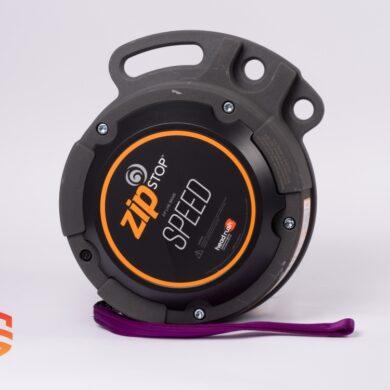 zipSTOP SPEED Zipline Brake | 50 – 72 kph€ 6.099,00 – € 6.349,00 Ex VAT
zipSTOP SPEED Zipline Brake | 50 – 72 kph€ 6.099,00 – € 6.349,00 Ex VAT -
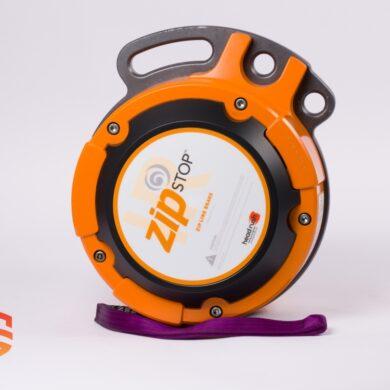 zipSTOP IR Zipline Brake | 24 – 60 kph€ 5.649,00 – € 5.799,00 Ex VAT
zipSTOP IR Zipline Brake | 24 – 60 kph€ 5.649,00 – € 5.799,00 Ex VAT -
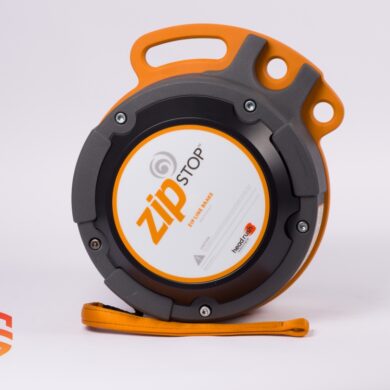 zipSTOP Zipline Brake | 0 – 36 kph€ 5.249,00 – € 5.499,00 Ex VAT
zipSTOP Zipline Brake | 0 – 36 kph€ 5.249,00 – € 5.499,00 Ex VAT
Braking
As previously stated, the braking style and design of the brake system have a significant impact on a manufacturer’s trolley design, as well as which designs are suited for a particular activity. Without going into the details of “the overturn moment” and brake-rated front plates, make sure that the trolley designs you’re considering are functional, brake impact force, and overall application compatible with your braking system.
Styles of connection and closure For equipment and system compatibility, ease of maintenance and inspection, and overall preference, it’s critical to evaluate the various connection methods and trolley closure designs. For some, an integrated system with a “straight to lanyard” connection technique will be used, which decreases the number of components and hence inspection time, inventory of on-hand maintenance parts, and the risk of dropped components on the course. Others will choose for the more traditional approach of combining separate components to build a custom assembly tailored to their own requirements and preferences.
Make sure your equipment selections are appropriate for your site’s long-term requirements, system compatibility, and guest experience.
Dimensions of the cable
Consider the cable size specifications for which the trolley is meant as one of the first filters to apply when choosing a trolley. Cable size was not an issue in the past because normal cable diameters were 12 or 13mm, but we are increasingly seeing systems with 16 to 20mm diameter cables.
Trolley makers are responding to this transition in a variety of ways, including size-specific sheaves and different size ranges for a trolley, with a minimum and maximum cable size. It’s critical not to go above the limit cable size, as this can have harmful implications.
Ergonomics
Both guests and guides benefit from ergonomics. Consider how easy it is for your guides to handle the trolley during the attachment and detachment processes, as these steps are crucial for safety, are done many times throughout the day, and are opportunities to inspire or lose trust with the participants. Consider the convenience of moving the trolley (attached or carried), the comfort of riding the zip line with the lanyard or crossbar attachment, and the comfort of the braking experience for your customers.
There are trade-offs in every design decision. Consider features, affordability, and durability before making a decision.
Regulations and testing requirements Zip line trolleys must pass a variety of tests. Keep an eye out for local regulators, accredited course inspectors, and insurance companies enforcing testing certification standards.
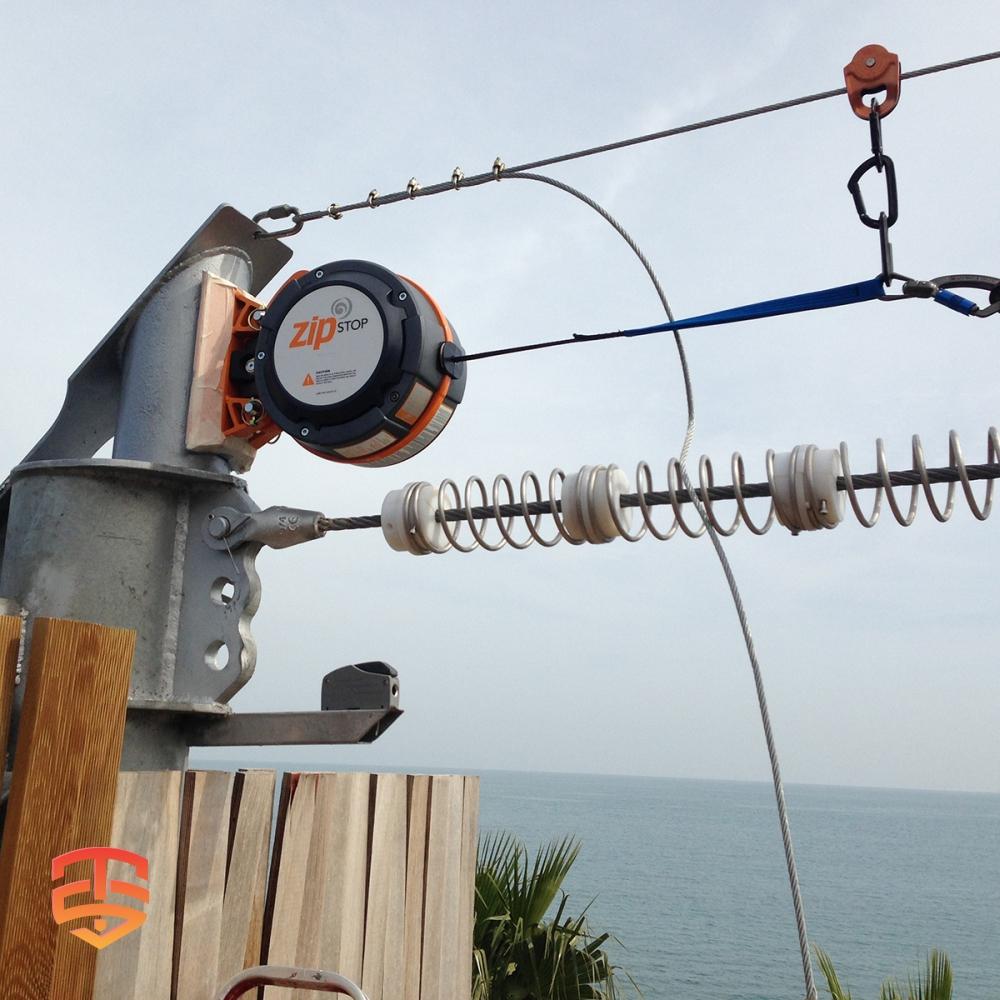
Zipline Safety Solutions
We deliver a complete professional Zipline system, from our Self-braking Magnetic Zipline Trolley to a safe Zipline Spring Brake.
We offer a full family of zip line brakes that increase throughput with a hands-free braking experience for zip line riders and operators, and a full ecosystem of zip line products to outfit the best zip line builds in the world. We use advanced technology to engineer and manufacture innovative adventure equipment for the outdoor, amusement and recreation industries.
Beyond the Basics: Unveiling Zipline Technology with Expert Analysis
Intrigued by the potential of Zipline technology? You’ve come to the right place! This article provides a solid foundation. But if you’re eager to delve deeper and gain insights from industry experts, keep reading…
- Zip Line Design: Components for a Complete System
- Considering operating and investing in a zipline?
- 9 Zipline Mistakes You Don’t Know You’re Making
- Magnetic Zipline Braking: A Revolutionary Way to Ensure Safe Rides
- Pros and Cons of Different Zip Line Brakes
- Expert Tips for Zip Line Brake Installations
- White Paper on Zipline Emergency Arrest Devices (EAD)
- The Importance of Optimizing Zip Line Design for Rider Speed
- Does your zip line need an emergency arrest device?
- The Magnetic Self-braking Zipline pulley
- Zipline Braking and landing considerations
- Why Zip Line Trolley Bearings Matter
- Whitepaper: Zipline Braking Dynamics
- Zip Line Installation: Give them the Best Ride
- How to startup a Successful Zip Line Business
-
 zipSTOP IR Zipline Brake | 24 – 60 kph€ 5.649,00 – € 5.799,00 Ex VAT
zipSTOP IR Zipline Brake | 24 – 60 kph€ 5.649,00 – € 5.799,00 Ex VAT -
 zipSTOP SPEED Zipline Brake | 50 – 72 kph€ 6.099,00 – € 6.349,00 Ex VAT
zipSTOP SPEED Zipline Brake | 50 – 72 kph€ 6.099,00 – € 6.349,00 Ex VAT -
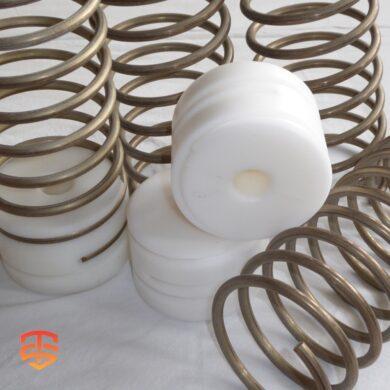 Spring Brake System | Primary & EAD zipline brake€ 98,00 Ex VAT
Spring Brake System | Primary & EAD zipline brake€ 98,00 Ex VAT







